In the world of animal breeding, understanding the reproductive habits of various species can be crucial for researchers and pet owners alike. One such group of animals that often requires this knowledge are mice and rats, two common household pets with a short gestation period. In this article, we will explore when these furry creatures typically have babies and what factors may impact their breeding cycles. Whether you’re a curious owner or a scientist studying rodent behavior, read on to learn more about the fascinating world of mouse and rat reproduction.
Overview of Mice and Rats
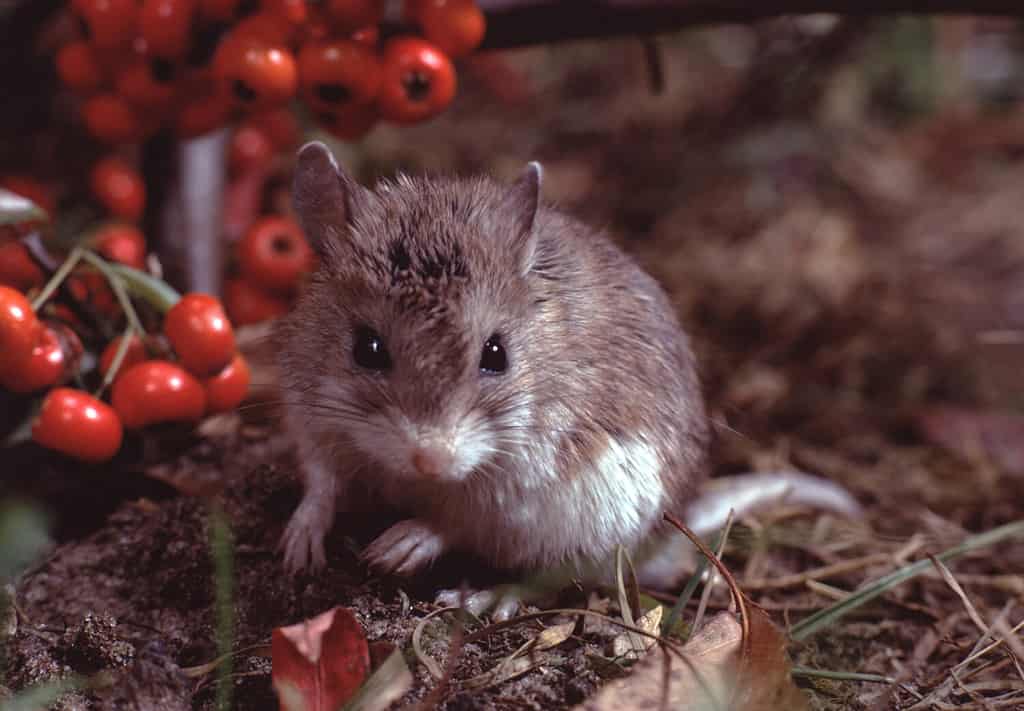
There are many different species of mice and rats in the world.
©Liz Weber/Shutterstock.com
Mice and rats are small, nocturnal rodents that belong to the family Muridae. They are found in almost every corner of the world and have adapted well to living alongside humans. Mice and rats both have similar physical features, such as pointed snouts, sharp teeth, long tails, and large ears.
Mice are typically smaller than rats, with a body length of around 3-4 inches (7-10 cm) and a weight ranging from 0.5 to 1 ounce (15-28 g). Rats are larger in size, measuring up to 9 inches (23 cm) in length, excluding their tail which could be longer than their body! Their weight varies between species but can range from about half an ounce up to several pounds.
Both mice and rats play important roles in various ecosystems by controlling insect populations or acting as prey for larger predators like snakes or birds of prey. However, they also pose health risks as carriers of diseases such as hantavirus or leptospirosis. These illnesses can potentially cause serious illness or even death if left untreated.
Despite their potential drawbacks, mice and rats have been extensively studied due to their usefulness in scientific research. Their biological similarities with humans make them ideal subjects for testing new drugs or investigating genetic disorders.
Overall, while mice and rats may not be everyone’s favorite creatures when they invade our homes uninvited or scurry across our paths outside at night time, we cannot deny the vital role they play within ecosystems worldwide.
When Do Mice and Rats Have Babies?
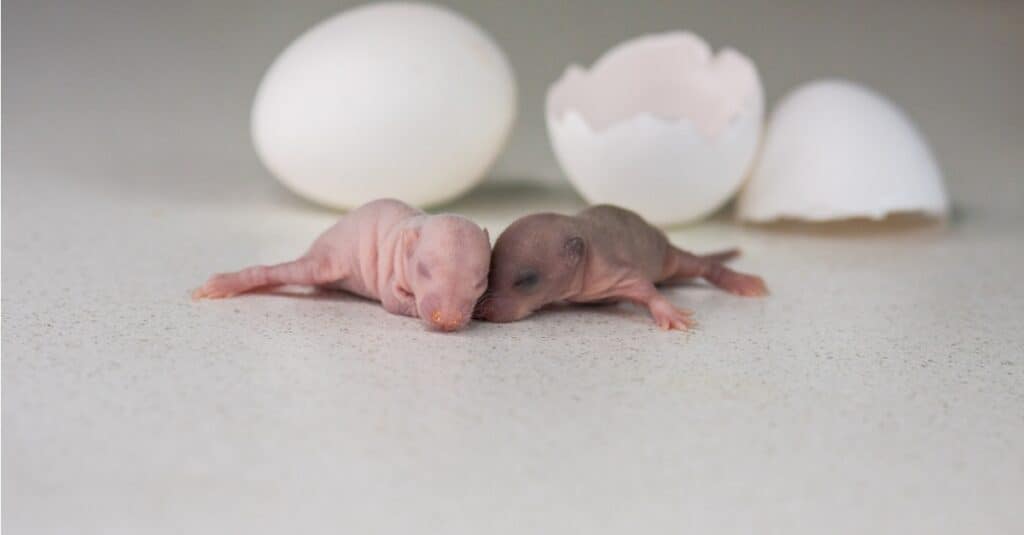
Mice and rats can give birth at very young ages.
©iStock.com/Kseniia Glazkova
Mice and rats are known to reproduce quickly, so it’s important to understand when they typically have babies. Both mice and rats reach sexual maturity at around four to six weeks of age, with females being able to give birth shortly after that. The gestation period for a mouse is approximately 19-21 days, while the gestation period for a rat is slightly longer at around 21-23 days.
In terms of breeding patterns, both species are capable of reproducing year-round as long as there is enough food and water available. However, they tend to breed more frequently in warmer weather when resources are plentiful. Additionally, female mice and rats can produce multiple litters per year if conditions allow.
In areas with harsh winters, mice and rats have babies in the spring after temperatures are warming above 50 degrees Fahrenheit and will sometimes have another litter in the early fall. So in cold places, mice and rats have babies in April and May and then again in September and October. In places with warm climates, they are known to reproduce all 12 months of the year.
Litter Size
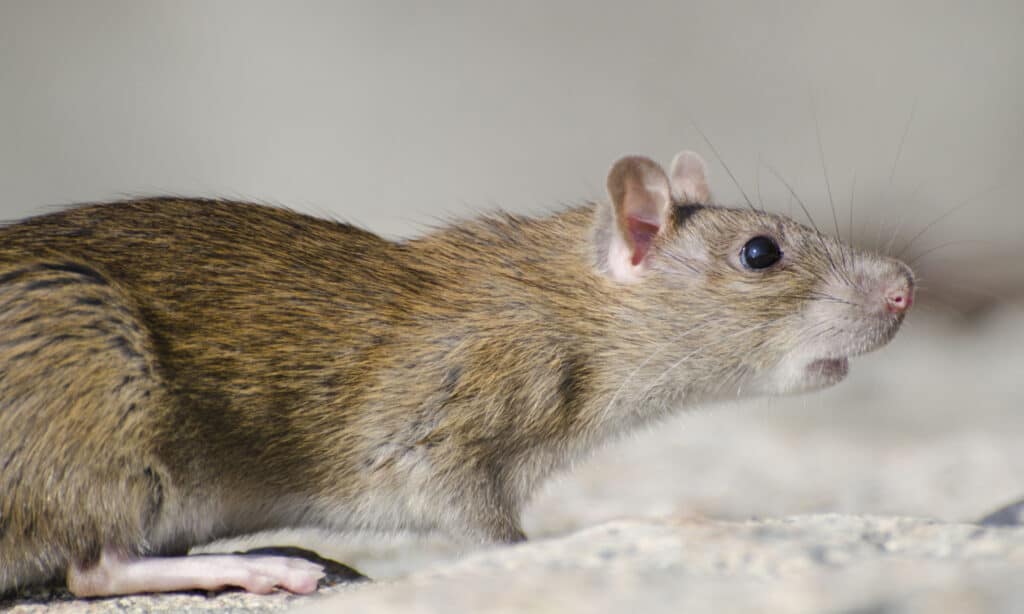
Rats usually have around 12 babies at a time.
©Oakland Images/Shutterstock.com
When it comes to the question of when mice and rats have babies, there are a number of factors that come into play. One of the most important things to consider is the size of their litter. On average, mice tend to give birth to about six pups at a time, while rats typically produce larger litters consisting of around 12 pups.
This means that in just one year, a pair of breeding mice or rats could potentially produce many offspring, something that can quickly lead to population explosions if left unchecked. As such, it’s important for pet owners and pest control experts alike to be aware of the reproductive habits and behaviors of these animals in order to effectively manage their populations.
Nests
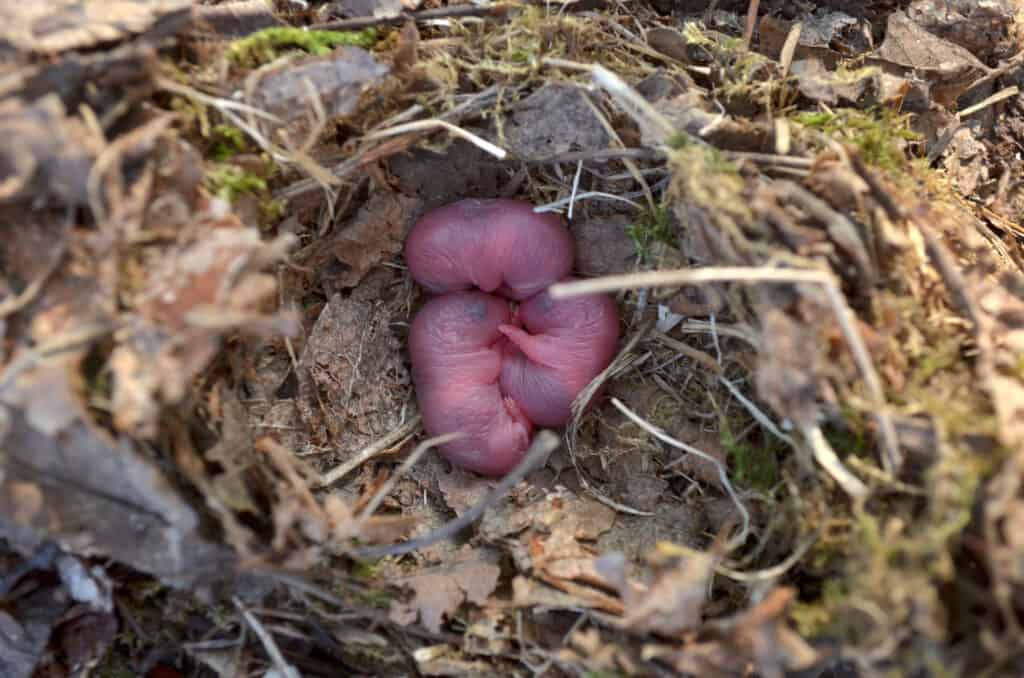
Rats build thick nests to keep their offspring warm.
©iStock.com/Julia Bilousova
Of course, knowing how many pups you might expect from a given litter is only part of the story. Another key consideration is where these animals choose to nest and give birth. Mice and rats are both known for being resourceful creatures when it comes to finding places to build their homes, whether it’s burrowing underground or sneaking into your attic or basement.
Mice and rats are known for their ability to build intricate nests that provide a safe and comfortable environment for their offspring. The composition of these nests can vary depending on the species, but they typically consist of soft materials such as shredded paper, cloth, or plant fibers. In addition to providing insulation from the cold, these materials also help to absorb moisture and reduce odors.
The process of building a nest typically begins with the female rodent gathering materials from her surroundings. She may use her teeth to shred paper or fabric into small pieces, or she may collect twigs and other natural materials if they are available. Once she has gathered enough material, she will begin shaping it into a circular form using her paws and mouth.
Some rodents prefer to build their nests in secluded areas such as burrows or crevices in walls. Others may construct their nests out in the open using grasses or other plants as a base. Regardless of where they choose to build their nests, mice, and rats take great care in ensuring that they are secure and well hidden from predators.
Behavior

Most types of mice are social creatures that live in groups and take care of each other.
©iStock.com/Kanashi
When it comes to the behavior of mice and rats, there is much to consider. These small rodents are known for their ability to adapt and thrive in a variety of environments. For the most part, they are social creatures that live in groups or colonies, with some species exhibiting complex social structures.
In addition to their prolific breeding habits, these animals also exhibit a range of other interesting behaviors. For example, both mice and rats are highly agile climbers and can squeeze through very small openings due to their flexible bodies. They also have excellent hearing and sense of smell, which helps them navigate through dark spaces.
Despite being considered pests by many people due to the damage they can cause in homes or businesses, there is no denying the fascinating nature of mouse and rat behavior. By studying these creatures more closely, we may be able to gain insights into our own evolutionary history as well as develop new strategies for managing pest populations without resorting to harmful chemicals or methods.
Diet
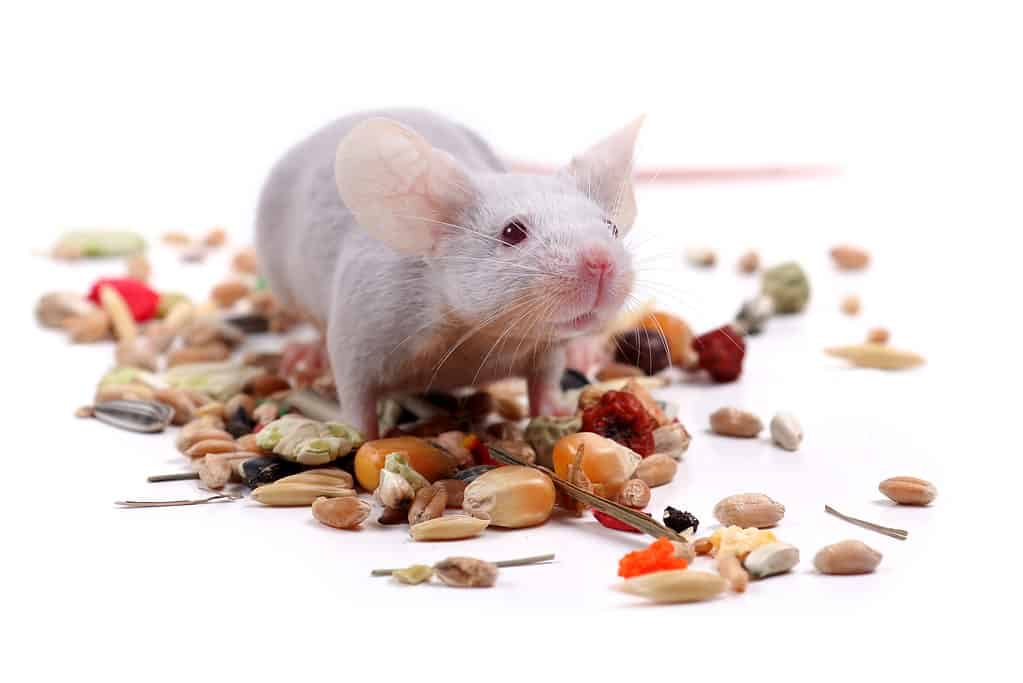
Fancy mice are beloved pets with a history of domestication spanning thousands of years!
©Emilia Stasiak/Shutterstock.com
These small rodents are known to be opportunistic eaters, meaning they will consume just about anything that is available to them. In the wild, mice and rats primarily feed on seeds, grains, fruits, insects, and other small animals.
In captivity or urban environments where food sources may be more abundant and varied, their diets can consist of almost anything, including human leftovers such as bread crumbs or vegetable scraps. It is important to note that while these rodents may seem like they have an endless appetite for food items that humans discard without a second thought, it’s crucial not to provide them with unhealthy foods such as sugary snacks or processed meats.
For a pet mouse or rat, giving these types of foods could lead to obesity in the animal, which then leads to health problems like diabetes in the long run. Therefore it’s essential always to ensure they receive a balanced diet consisting mainly of fresh vegetables/fruits along with some grains/nuts/seeds alongside their staple protein source.
Habitat

Rats and mice are highly adaptable creatures that are great at surviving.
©JaklZdenek/Shutterstock.com
Mice and rats are highly adaptable creatures that can thrive in a variety of habitats around the world. In urban areas, they commonly nest in buildings, sewers, and other structures where food and shelter are readily available. They may also be found in parks or other green spaces where there is ample vegetation for cover.
In rural areas, mice and rats often inhabit fields and forests, preferring to burrow into soil or hide among plants. They may also make their homes in abandoned buildings or barns on farms.
In tropical regions, these rodents can be found living near bodies of water such as rivers or lakes where the climate is warm and humid. In colder climates, they tend to seek out warmer places like basements or attics during the winter months.
Overall, mice and rats are incredibly versatile animals that can adapt to many different types of environments. This makes them one of the most successful species on earth despite being widely regarded as pests by humans due to their tendency to spread disease and cause damage to property.
The photo featured at the top of this post is © Jennifer Thornhill/Shutterstock.com
Thank you for reading! Have some feedback for us? Contact the AZ Animals editorial team.






